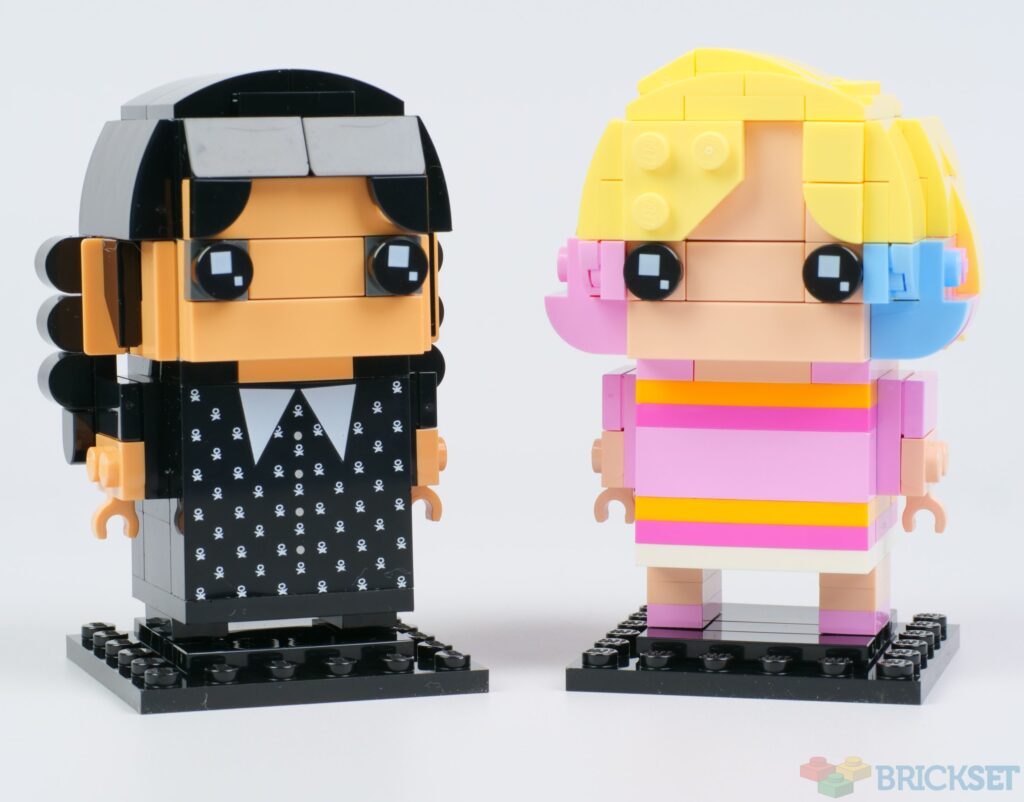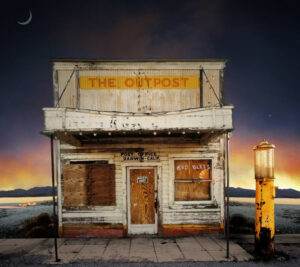
The LEGO BrickHeadz line, known for its distinctive blocky characters, has been a staple of LEGO’s offerings since its introduction. Over the years, BrickHeadz has covered a wide range of themes, from iconic superheroes to beloved pop culture figures. Set number 40750, featuring Wednesday and Enid from the popular Netflix series “Wednesday”, continues this tradition by bringing characters from a recent cultural phenomenon into the BrickHeadz fold. Remarkably, these characters hold the distinction of being the first BrickHeadz reviewed this year, a fact that speaks to the enduring yet often understated popularity of the theme.
One of the most notable aspects of this set is its position in the larger BrickHeadz catalog. Wednesday and Enid are assigned numbers 252 and 253, highlighting the considerable breadth of this product line, which now features hundreds of different characters. Despite the extensive roster of BrickHeadz sets, however, innovation within the line has been somewhat limited. The figures are often praised for their faithfulness to their source material, but the BrickHeadz formula has remained largely unchanged. They consistently feature the familiar blocky aesthetic, characterized by simplified, almost caricatured representations of their characters. Yet, this very consistency has given rise to the perception that BrickHeadz as a theme has stagnated, even as it has become an evergreen line in LEGO’s portfolio.
To delve deeper into the significance of set 40750 and the BrickHeadz line as a whole, it is worth considering how the theme has evolved—or, in many cases, not evolved—over its seven-year lifespan. BrickHeadz was launched in 2016 with a series of figures based on Marvel and DC superheroes. The concept was simple: take well-known characters and translate them into small, collectible models made primarily of LEGO bricks. The appeal lay in their accessibility. The builds were straightforward, and the end result was a highly stylized, instantly recognizable version of a familiar character. Fans of all ages could build their favorite characters in a format that was both affordable and collectible.
However, as with any long-running product line, the challenge for LEGO has been keeping the concept fresh. While the introduction of new franchises has helped to sustain interest—such as the addition of “Star Wars”, “Harry Potter”, and “Stranger Things” characters—there has been little in the way of substantial innovation in the design or building techniques. This predictability is perhaps part of the charm for collectors, but it has also led some to view BrickHeadz as a somewhat stagnant theme. Each new set is largely a variation on a well-established formula: a simple build with a blocky, cartoonish character as the end result.
Set 40750 does little to disrupt this formula. Both Wednesday and Enid are instantly recognizable, but the builds themselves are standard BrickHeadz fare. Each figure is composed of a familiar base with a unique headpiece to capture the character’s distinctive features. For Wednesday, this means her trademark braided hair and stoic expression, while Enid is given her colorful, exuberant wardrobe. The figures are faithful to the characters they represent, but they do not break new ground in terms of design or complexity.
Yet, despite the lack of significant innovation, there is one unique aspect of this set that could signal a shift in direction for the BrickHeadz line. LEGO has always been attentive to fan feedback, and while the BrickHeadz theme has maintained a steady following, there have been growing calls for more variety in the builds. Fans have expressed a desire for figures that push the boundaries of what BrickHeadz can be, whether through more complex building techniques, interactive elements, or more dynamic poses.
In the case of set 40750, there is a small but important detail that hints at the possibility of change. Both figures are mounted on a single baseplate, rather than individual ones. This may seem like a minor adjustment, but it is notable because it changes the way the characters are displayed. In previous sets, each BrickHeadz figure stood alone on its own baseplate, which reinforced the idea of the figures as individual, self-contained pieces. By placing Wednesday and Enid together on a shared base, LEGO is acknowledging the relationship between the characters and suggesting that BrickHeadz could evolve into something more than just a collection of standalone figures.
This shared baseplate could be seen as a metaphor for the direction the BrickHeadz line might take in the future. Rather than focusing solely on individual characters, future sets could explore the relationships between characters, incorporating more dynamic scenes or dioramas. This would not only add an extra layer of depth to the builds but also increase their appeal to fans who enjoy creating more elaborate displays. It could also open up new possibilities for storytelling within the BrickHeadz format, allowing builders to recreate iconic moments from films, TV shows, or video games.
Another aspect of set 40750 that stands out is its choice of characters. While Wednesday Addams is a well-established figure in popular culture, Enid is a relatively new character, introduced in the “Wednesday” series as Wednesday’s colorful and exuberant friend. The pairing of these two characters reflects LEGO’s ongoing effort to stay relevant by incorporating new and trending franchises into its product lines. “Wednesday” was a breakout hit for Netflix, and the decision to include both Wednesday and Enid in the same set shows that LEGO is not afraid to take risks by featuring characters from newer properties, even if they do not yet have the same cultural cachet as more established figures like Batman or Harry Potter.
In this way, the Wednesday and Enid set is emblematic of the balancing act that LEGO must perform with the BrickHeadz line. On the one hand, the company must continue to deliver what fans expect: high-quality, faithful representations of beloved characters in the familiar BrickHeadz style. On the other hand, LEGO must also find ways to keep the theme fresh and exciting, whether by introducing new franchises, tweaking the display format, or experimenting with more complex builds.
Set 40750 may not represent a dramatic departure from the established BrickHeadz formula, but it does contain small hints of where the theme might be headed in the future. The shared baseplate suggests that LEGO is willing to experiment with new ways of displaying and contextualizing its characters, while the inclusion of Enid alongside Wednesday shows a willingness to take risks with newer properties. Whether these changes will be enough to keep BrickHeadz fresh for another seven years remains to be seen, but for now, the Wednesday and Enid set serves as a reminder that even within a well-established theme, there is always room for small but meaningful innovations.
No comments yet.








